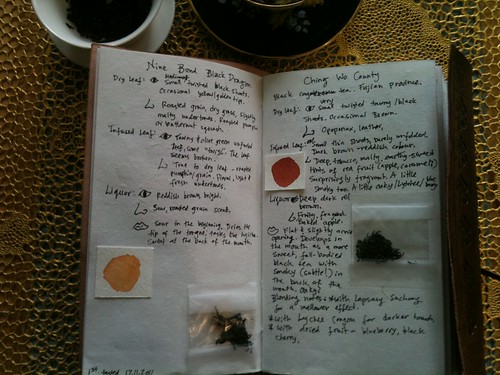Xin Nian Kuai Le!
Xin Nian Kuai Le!
Happy Year of the Dragon :-)
Today marks the beginning of another 12 year zodiacal cycle, and being a dragon myself I can only hope for the best. This year it's a black dragon, or a water dragon, and it also marks the end of the cycle of wood and the beginning of a cycle of fire. The dragon is a mythical creature of remarkable size. So big that you can't see both of its head and tail at the same time! So it always has something new to show you when you least expect it. Dragon, unlike the Western evil fire-spitting monsters are believed to brings good fortune in Chinese culture. From all that I gathered means that it's a year of unpredictable things, surprising turns of events that could change for either better or worse - according to all the sources that like to predict things... How convenient for them!
On a more on-topic for this blog notion: my spontaneous search today for a dragon-related plants (preferably aromatic) did not yield anything of interest besides what I already knew about... There is the obvious - 9 bend dragon red tea (probably not the only dragon-inspired tea in China though!) which I've tasted and reported about earlier. But I'm speaking of dragon's blood (the resin of the plant pictured above), which is blood-red, and is used in incense more than in perfumery. I've used in in my Clarimonde perfume. It is associated with the planet of Mars, and is burnt in magical rituals to return a lost love. It has a scent not unlike frankincense when burnt on hot charcoal.
The other dragon-related aromatic plant is tarragon - aka estragon - which means "little dragon". It has a sweet, balsamic, anise-like scent because of the methyl chavicol content (it might remind you of exotic or Thai basil as well), but brighter and greener than aniseed or fennel, and the absolute is out of this world lovely, with buttery, lactonic aspects that are rare to find in plant extracts. I've used it in my Vetiver Racinettes and Black Licorice. And of course - the culinary uses of tarragon are quite delightful - I use it in fennel & orange tea sandwiches, in salad dressings and on fish.
Since I've been so absorbed in my botanical research of aphrodisiacs I think writing about these two in more depth will take place later. But I hope you found this very little bit inspiring and that the year will bring you only happy surprises!



